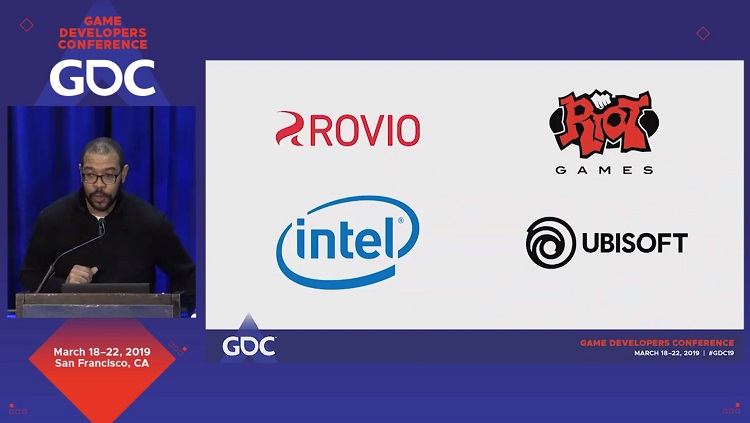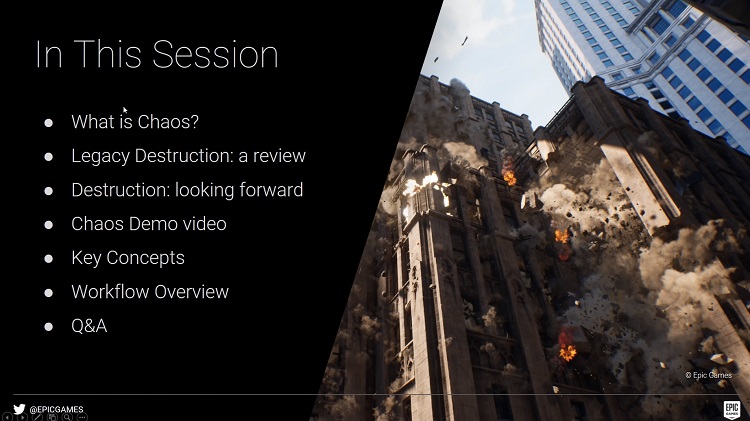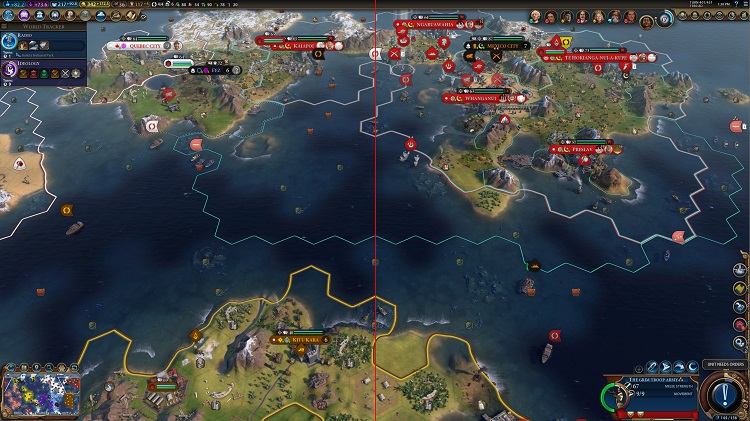Scalability for All: Unreal Engine* 4 with Intel
Author: Jeff Rous
Unreal Engine* 4 is a high-performance game engine for game developers. Learn how Intel and Epic Games* worked together to improve engine performance both for CPUs and GPUs and how developers can take advantage of it.
The Architecture of 11th Generation Intel® Processor Graphics
Authors: Antoine Cohade and Michael Apodaca
Scheduled for release this year, this next generation brings significant improvements over the widely used 9th generation of Intel® Processor Graphics. The talk begins with an overview of Intel® Processor Graphics Architecture, its building blocks, and their performance implications. Next, take an in-depth look at the new and innovative features of this latest generation of integrated graphics.
Streamed Cloud Gaming Solutions for Android* and PC Games
Author: Zhihong Yu
Cloud gaming is getting a lot of press lately. As the leading cloud service provider in China, Tencent is embracing the cloud to deliver graphic-intensive PC and mobile games, as well as core developer solutions.
Get Multicore Differentiation and Great Integrated Graphics Performance
Authors: Tamas Rabel
While developing Total War*: THREE KINGDOMS, Creative Assembly* collaborated with Intel to get the most out of modern, multicore processors. Join us as team members share their tips and tricks for achieving great performance on the latest integrated GPUs.
It Doesn't Have to Be Hard: How to Fix Your Performance Woes
Author: Carlos Dominguez Caballero
Maximize your game performance on a wide range of hardware. Learn how to use Intel® Graphics Performance Analyzer to identify and quantify common performance bottlenecks, mitigate them, and validate optimizations.
Create a Scalable and Destructible World in Hitman 2*
Author: Leigh Davies
Gain insight into how IO Interactive* (IOI) designed the crowd, environmental audio, non-playable character simulation, and physical destruction systems to take advantage of available hardware and dynamically upscale resolution and deliver more realism. See the design and architecture of the destruction system, including the asset pipeline and game runtime that enables IOI to create a more interesting world for their players.
Intel® Open Image Denoise in Unity*—Open Source Denoising for Lightmaps
Author: Carson Brownlee
This session showcases the integration between the Unity* game engine and the recently released Intel® Open Image Denoise library for CPU-based lightmap denoising. Learn how the library significantly improves fidelity over bilateral blur by using an AI-based denoiser, which greatly improves time-to-convergence for lightmap rendering.
Accelerate Large-Scale Inverse Kinematics with the Intel® Distribution of OpenVINO™ Toolkit
Author: Hanyoung Jang
Inverse kinematics (IK) technology helps game developers create natural character animations but its complexity makes it time consuming to implement across a large cast. This talk details how the Deep Learning Deployment Toolkit (DLDT) allows game developers to quickly deploy deep-learning algorithms to solve character IK problems and to yield better results.
Simple Single Instruction Multiple Data (SIMD) with the Intel® Implicit SPMD Program Compiler (Intel® ISPC)
Authors: Pete Brubaker and Jon Kennedy
Learn how to write fast, efficient, and maintainable vector code for the CPU with examples of simple SIMD that use the Intel® ISPC.
Other GDC 2019 Talks and Sessions
In addition to our sponsored sessions, Intel engineers also presented with other partners and organizations at GDC. Here's where you can find their talks and materials:
OpenXR* – State of the Union - Khronos GDC 2019
Authors: Brent E. Insko, PhD Lead VR Architect at Intel & OpenXR* Working Group Chair
The OpenXR provisional specification was released by Khronos at GDC. OpenXR is an API designed to unify augmented reality and virtual reality software development across multiple platforms. Brent Insko, Intel, chair of the OpenXR working group discusses the development of the API and walks through how to write an OpenXR application.
Player Behavior Research Microtalks Introduced by Fair Play Alliance
Authors: Fair Play Alliance Speakers: Kimberly Voll (Riot), Jamie Sherman (Intel), Elise Lemaire (Rovio)
In a world of "live" games, and amidst an ever-expanding number of 3rd party platforms, not only are player populations growing and becoming more diverse, but HOW people play is fundamentally changing. It is critical, then, that game developers have a better understanding of both player motivations and subsequent in-game (and online!) behaviors. In this session, speakers at the forefront of research in the field of player behavior, offer a series of "rapid fire" micro-talks, each lasting no more than six minutes. Kimberly Voll (Riot) presents “Optimizing Games for Humans,” Jamie Sherman (Intel) shares “Toxicity: the Player Perspective,” and Elise Lemaire (Rovio) reports on “The Importance of Player Enjoyment.”
Causing Chaos: The Future of Physics and Destruction in Unreal Engine (Presented by Epic Games)
Watch the video Order from Chaos - Destruction in UE4 | GDC 2019 | Unreal Engine on YouTube*
Check out the GDC 2019 Session on new Unreal Engine physics features. Whether making a high-end AAA game or a small-team indie title, physics simulation and destruction can play a huge part in bringing your games to life. Shown in the Unreal Engine Learning Theater session by Epic’s Alan Noon during GDC 2019, see new tools and techniques for creating high-end, sophisticated physics and destruction effects in Unreal Engine. The video will start you learning how to use these tools to develop interactive worlds that can be fractured, scattered and destroyed.
Read the online article: Unreal Engine* New Chaos Physics System Screams With In-Depth Intel CPU Optimizations
DirectX*: Variable Rate Shading, a Deep Dive, Deriving Screen Space Shading Rate, Implementation Tips and Sparse Lighting (Presented by Microsoft)
Microsoft* presented 2 sessions on Variable Rate Shading; both an Intro Session and a Deep Dive session. Intel Engineers Adam Lake and Kelly Gawne assisted. Variable Rate Shading is a new DirectX*12 API giving developers fine-grained control over shading frequency, enabling significant frame time savings on modern GPUs. This talk presents a deep dive on VRS and the algorithms used to drive shading rate. Included are integration details, tips and optimizations. Learn how to take VRS to the next level, by exploiting the VRS signal with a new deferred lighting technique, Sparse Lighting. Variable Rate Shading Getting Started page on the DirectX Tech Forum.
Beyond the Hype Cycle: Barriers and Breakthroughs Toward XR Growth
Author: Kim Pallister
Has everyone lived through the 'trough of disillusionment', or are they kidding themselves about VR and AR being anywhere near mainstream adoption? This session will look at recent market trends, and some of the technology and product developments that may be pushing us past the barriers to a bright future for XR. The session will cover recent and upcoming promising products, what it means to be leveraging mobile technology curves, and technical developments and challenges in displays, compute SoCs, and wireless tech. It will also cover interesting use cases outside of gaming that may affect the gaming market.
Reporting Metasystem Design and Penalization Strategy Best Practices (Presented by Fair Play Alliance)
Author: George Kennedy
This talk is intended to examine result-driven penalization and user reporting designs that members of the Fair Play Alliance including Intel, Riot Games*, Tencent* Game Security and Two Hat Security have successfully implemented. The talk will include examples that will outline how systems were implemented as well as a look at measurable results from those projects. One underpinning point is to analyze how those best practices can be conducive to reforming player behavior by focusing on providing timely feedback to players, and how penalization practices can be leveraged to produce the desired outcome of fostering productive interactions in games.


